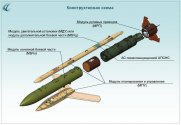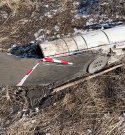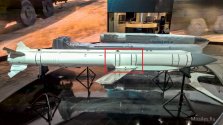It's not specifically in reply to this comment but more of a general remark using this as a starting point:
Michael Kofman is a quality analyst. That said, it's best to treat his work as the "least biased" out of Western think tanks. But him and Rob Lee are still biased. Most recently, Rob Lee reiterated that Ukraine had favorable casualty ratios in Bakhmut. I don't care if he was shooting a rifle on the front line himself, he has no way of knowing that information. The only people with useful and detailed Russian casualty numbers are Russian commanders just like the only people with useful and detail Ukrainian casualty numbers are Ukrainian commanders...
Little slip ups like that are fine IMO. And I still consider Kofman to be a fairly reliable source, but we need to understand that the only real thing we are seeing are opinions and anecdotal evidence. Therefore, all of our assumptions must be underline by a degree of uncertainty.
There's something that we refer to as "tactical tables" and by we I mean former Warsaw Pact militaries, which includes both Poland, as well as both Russia and Ukraine. Tactical tables is war described in arbitrary numbers that are developed from meticulous study of past conflict and exercises and translated from real data into "tactical parameters". They don't make much sense outside of the entire framework and sometimes are slightly wrong, but they are based on
what works which means they're based on what allowed a fighting unit to achieve its objective with a given success and casualty rate.
Military science is very much about hundreds and hundreds of "rules of thumb" for everything.
Those rules of thumb described by tactical parameters are somewhat similar to how you would set up rules in a tactical game - tabletop or computer - except they are much more unwieldy and complicated. There are some games that utilize past tactical tables but they're not popular because they're not much fun. And that's because military intelligence is not fun at all. It's tedious, boring and confusing collection and interpretation of rather meaningless data to produce something that can be put against those tables with a "degree of probability".
The degrees of probabilty work something like this: of probability of data assessment or confidence of 0% to 49% is below 5% of tactical probability or what will happen according to tactical tables, 50% is 5% and 95% is 100%. You never have probability or confidence higher than 95% and never lower than 50% because if you have lower than 50% then it's a coin toss. IIRC my edition of tactical tables had standard confidence at 85% which is not extremely high but high enough.
What those tables had were parameters like "defensive position strenght" - not reinforced say... 1,0 to 1,5, lightly reinforced 1,5 to 2,5 etc up to heavily reinforced at 4,5 to 6. For example, I can't remember precise data and don't want to look for the materials right now.
Then you have your fire density and your fire mission - a specific amount of ordnance of specific category in a given unit of time (that depends on how many guns or lauchers are performing the fire mission) hitting a given area (defined by grids) with a given CEP.
Those then match their defensive strength like light infantry, mechanized infantry in vehicles, tanks etc and defensive position strength like trenches, bunkers, buildings etc.
Those will give you result categories - you need such and such parameters of fire mission against such and such target for your target to be unaffected, suppressed, suppressed and damaged, neutralized and destroyed.
And those categories of result have a numerical value as well - 5-10% loss of complement (TOE - table of organization and equipment in NATO) 15 to 25% loss, 25 to 40% loss, 40 to 60% loss, 75% loss and above. Those are then matched against TOE or strength of identified target and you get the results.
Against target X in position Y we fired Z and the result must be Q. Yes/No. Await confirming reports and send to MI to verify.
That's how it's done.
Everything about how war is conducted is informed by huge numbers of manuals filled with such tables. Those tables are then run against real data from the battlefield - recon and UAV images, satellite images, field reports, elint data etc - by military intelligence people who give projections, assessments etc of what happened and what can come out of it.
Such and such forces in the area, such and such units identified, such and such strenght, such and such readiness etc etc. And based on that "actionable intel" staff officers update tactical maps and develop suggestions and/or commanders give orders. This largely depends on the staff/command culture. Not sure what Ukraine does but I assume it's closer to Russian/Soviet style which is staff prepares situation and commanders make the call. In other armies staff officers are tasked with providing suggestions and commaders have the final voice. Which is also why Russians are not as aggressive because it's up to one man to decide everything.
All of that has confidence between 50 and 95% and usually 80 to 85% because that's the most practical value.
This is what "military science" is all about. And that is how Rob Lee who IIRC is a former Marine informs his assessment of casualty ratios based on his knowledge of USMC "rules of thumb" and what Ukrainian military tells him about how they perceive the situation based on their AFU "rules of thumb".
These parameters and calculations are enough to assess that when for example low bound (50% prob) of casualty ratio is 1:2 and high bound (95% prob) is 1:6 the mean is 1:4 which is favourable. If recent reports indicate a falling trend then it's becoming unfavourable.
And when you have a situation like in Bakhmut where the same tactical scenario is repeated time and time and time again and you have plenty of data to run your analysis you get a pretty good "rule of thumb" idea of what is going on.
This is also why I always pay attention to people who use military assessment because those types of assessments can be compared to the framework of that person's or their source's "rule of thumb". So even if they don't give numbers like OSINT crowd their data is actually more meaningful because it tells me what the tactical assessment is going to be for each side of the battle. OSINT data is for getting clicks and donations, not for making tactical decisions. Tactical decisions need actionable intel and tactical parameters and OSINT is not that. Don't confuse the two. The world of the military and the world of the military enthusiast couldn't be more different. Those who know what I'm talking about know what I'm talking about.
Also don't take all those numbers as gospel. It's been many years since I read the manuals and since then I've read quite a lot of other countries' stuff so I just explained the process using figures that seemed plausible but I might have mixed things up. My point was only to explain who is credible and why and to what extent.
For example Chuck Exseal is useless because he's former spec ops. Spec ops is barely military and they don't do tactics above squad level. Those who do don't end up like Chuck Exseal but find employment with good salary in corporate security.
Also.. learn to take a
hint. Many of you here really just like to listen to your own voices and grow your information bubbles but I come here because it's a good, accessible place for info on PLA that is not absurdly biased and which doesn't require me to pay huge amounts of money, learn Mandarin (still getting to it...maybe later this year) or get a clearance and a boring job. But then I come to this thread and oh my god. Sometimes it's good to listen for a while even if you don't like what's being said or who is saying it. After all there's no better teacher than the enemy (and I wouldn't really consider myself an enemy to the more reasonable people here even if we disagree - those unreasonable not so much, but that's only because you're
unreasonable and not for other reason). Sometimes you're right, sometimes you're wrong but it's always important to be
wise. So guys, do yourself a favour and take hints when they're given. I've seen what this forum is capable of but still... come on. Are we here to grow angrier, louder or smarter? I know what I want. But do you?
Hope that helped. Take care.










